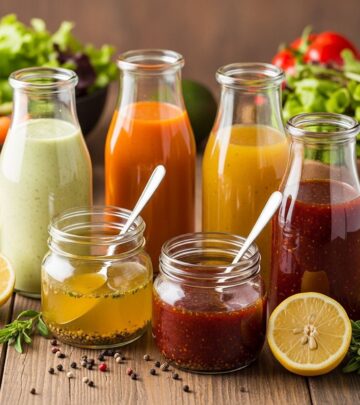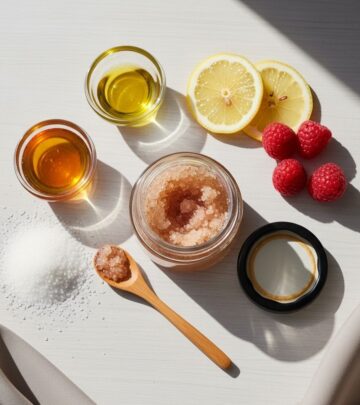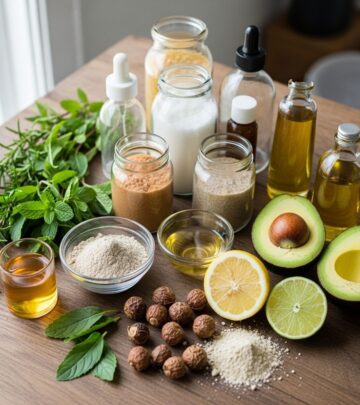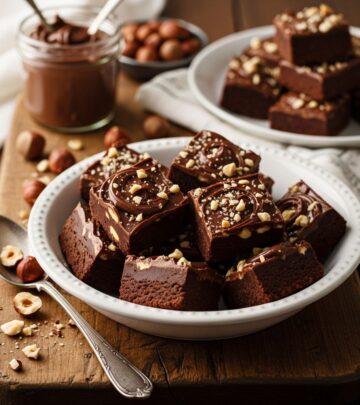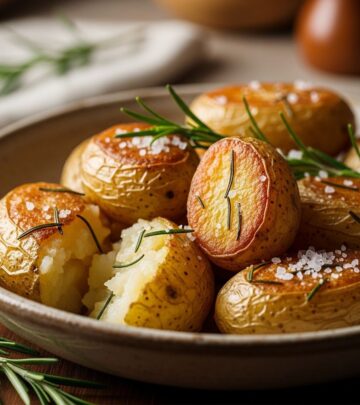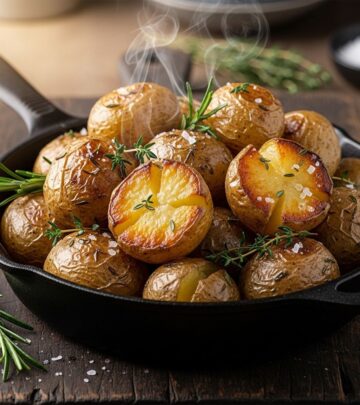Potato Soup Recipe: A Comprehensive Guide to Classic Comfort
Savor warm, comforting flavors crafted from scratch to brighten chilly, cozy nights.
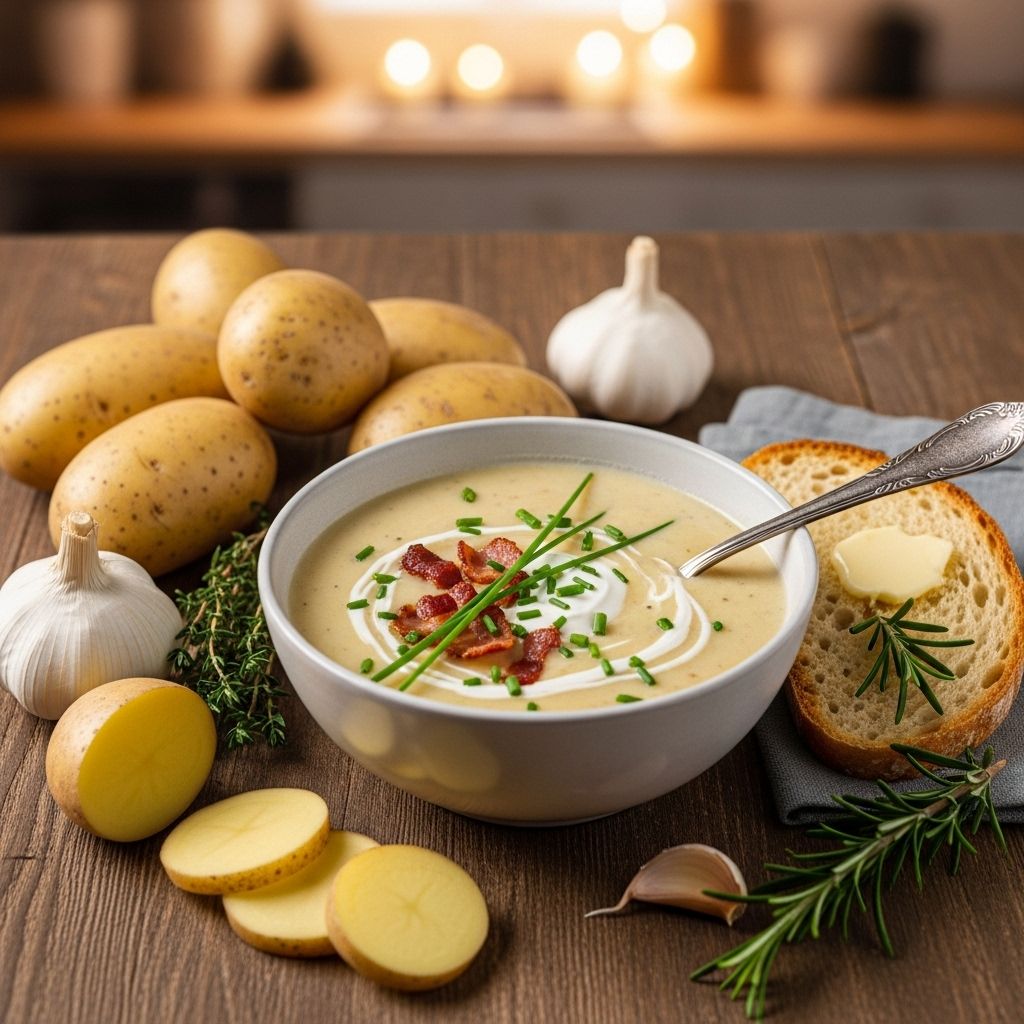
Image: HearthJunction Design Team
Old-Fashioned Potato Soup: A Cozy Homemade Classic
There’s something timeless about a bowl of creamy, old-fashioned potato soup. This classic comfort food, brimming with tender potatoes, aromatic onions, and simple flavor, has been warming kitchens and hearts for generations. Whether enjoyed as a main dish or a starter, potato soup is economical, filling, and easy to customize to suit every taste.
What Makes Old-Fashioned Potato Soup Special?
Old-fashioned potato soup is beloved for its rustic simplicity and hearty flavor profile. Unlike heavier, cream-based versions, this recipe relies on basic pantry staples and a homemade touch. The classic combination of potatoes, onions, carrots, and a few essential seasonings creates a meal that is both wholesome and deeply satisfying.
- Budget-Friendly: Uses accessible, inexpensive ingredients.
- Easy Preparation: Simple steps and no need for fancy equipment.
- Versatile: Adaptable with various add-ins and toppings.
- Comfort Food: Fills the kitchen with nostalgic aromas and warmth.
Ingredients
This old-fashioned potato soup features basic ingredients that most home cooks already have on hand. Each component plays a vital role in building flavor and texture.
- Butter (1/4 cup): Adds richness and forms the base for sautéing vegetables.
- Large Onion (chopped): Provides savory depth and sweetness.
- Potatoes (6, peeled and diced): The star of the show—choose a starchy variety for a creamier result.
- Carrots (2, diced): Contribute color, subtle sweetness, and nutrition.
- Water (3 cups): Cooks the vegetables and forms the soup’s liquid base.
- Chicken Bouillon Powder (2 tablespoons): Adds savory umami flavor. Substitute with vegetable bouillon for a vegetarian version.
- Salt and Pepper (to taste): Essential seasonings to enhance all flavors.
- Milk (2 cups): Creates a creamy, smooth consistency without overpowering the potatoes.
Step-by-Step Preparation
Making old-fashioned potato soup is all about layering flavors and giving the vegetables time to become tender and flavorful. Follow these detailed steps for perfect results every time:
- Sauté Aromatics: In a large pot, melt the butter over medium heat. Add the chopped onion and cook until translucent, stirring occasionally for 3-5 minutes. This step draws out sweetness and anchors the soup’s flavor.
- Add Vegetables: Stir in diced potatoes and carrots. Continue to cook for another 2-3 minutes, allowing the vegetables to begin softening and absorb the flavors from the butter and onion.
- Simmer: Pour in the water and add chicken bouillon powder. Bring the mixture to a gentle boil, then reduce heat and simmer until the potatoes and carrots are fork-tender, about 15-20 minutes. Skim off any foam or impurities for a cleaner taste.
- Season: Taste the broth and add salt and pepper as needed. The amount of salt required can vary depending on your bouillon, so season judiciously.
- Add Milk: Pour in the milk and heat gently until warmed through. Do not let the soup boil at this stage to prevent curdling. The milk brings a silky, creamy texture that binds the soup.
- Final Adjustments: For a thicker soup, use a potato masher to gently mash some of the potatoes in the pot. For a creamier finish, blend a cup or two of the soup (carefully) and return it to the pot. Adjust seasoning once more before serving.
Tips for Best Results
- Potato Variety: Russet or Yukon Gold potatoes work best for a creamy texture.
- Low and Slow: Simmer gently to avoid breaking the potatoes and to meld flavors.
- Customize Your Soup: Add cooked bacon, shredded cheese, or fresh herbs for extra flair.
- Texture Control: For chunky soup, leave potatoes intact. For smoother results, partially mash or blend the soup.
- Keep It Creamy: Add milk gradually and avoid boiling after milk is added to keep the soup velvety.
Popular Variations
Potato soup is a canvas for creativity. Try some of these popular variations to personalize your bowl:
- Vegetarian Version: Swap chicken bouillon with vegetable bouillon, and use plant-based milk if desired.
- Bacon Lover’s Potato Soup: Sauté chopped bacon in the pot before adding onions, reserving some for garnish.
- Cheesy Potato Soup: Stir in sharp cheddar or a blend of cheeses for a rich, decadent twist.
- Loaded Potato Soup: Top with green onions, sour cream, and crispy bacon bits for a “baked potato” experience.
- Herb-Infused: Add fresh dill, thyme, or parsley to brighten the flavor profile.
- Chunky Vegetable Soup: Incorporate celery or corn for extra substance and nutrition.
Nutritional Information
| Nutrient | Approximate Amount per Serving |
|---|---|
| Calories | 200-250 |
| Fat | 8-10g |
| Carbohydrates | 30-35g |
| Protein | 4-6g |
| Sodium | 400-600mg |
Note: Actual nutritional values may vary based on exact ingredients and portion sizes.
Serving Suggestions
Old-fashioned potato soup is delicious on its own, but serving it with simple accompaniments can turn it into a memorable meal. Consider these ideas:
- Crusty Bread: Serve alongside slices of warm, rustic bread for dipping.
- Side Salad: Pair with a crisp green salad to balance the soup’s creaminess.
- Hearty Garnishes: Add a sprinkle of grated cheese, snipped chives, or crispy bacon for extra flavor.
- Soup Toppings: Try a dollop of sour cream or a dash of hot sauce to enhance the taste.
Storage and Reheating
- Refrigeration: Cool soup quickly and store in airtight containers for up to 3-4 days.
- Freezing: Potato soup can be frozen for up to 2 months. Allow to thaw overnight in the refrigerator before reheating gently on the stovetop.
- Reheating: Reheat over low heat, stirring often. Add a splash of milk if the soup is too thick after chilling.
Frequently Asked Questions (FAQs)
Can I make potato soup ahead of time?
Yes, potato soup can be prepared a day or two in advance. Flavors often improve with time. Reheat gently and add extra milk or water if needed to adjust consistency.
What potatoes are best for soup?
Russet potatoes create a creamier texture, while Yukon Gold potatoes hold their shape better. Either works well depending on your preference.
How do I thicken or thin my potato soup?
Thicken by mashing some of the potatoes or blending a portion of the soup. Thin by stirring in more milk, broth, or water until desired consistency is reached.
Can this recipe be made dairy-free?
Yes, substitute the butter for a plant-based alternative and use unsweetened non-dairy milk to keep the soup dairy-free.
Is it possible to use leftover mashed potatoes?
Absolutely! Fold in mashed potatoes during the final stage to create a thicker, ultra-creamy soup.
How do I prevent the milk from curdling?
Keep the heat low after adding milk and avoid boiling the soup. Gently warm the soup to keep it smooth and creamy.
Conclusion
Old-fashioned potato soup remains a beloved recipe for good reason. With its simple ingredients and adaptable nature, it’s a go-to meal for cold nights, busy weekdays, or whenever comfort is needed. Try this traditional recipe and enjoy the timeless flavors that have brought families together for generations.
Related Recipes
- Absolutely Ultimate Potato Soup: A richer, bacon-infused take on the classic.
- Baked Potato Soup: All the flavors of a loaded baked potato in a creamy bowl.
- World’s Best Potato Soup: Incorporates mushrooms and cheddar for a hearty meal.
References
- https://www.allrecipes.com/recipe/13043/old-fashioned-potato-soup/
- https://www.allrecipes.com/recipe/13218/absolutely-ultimate-potato-soup/
- https://www.allrecipes.com/recipe/13404/worlds-best-potato-soup/
- https://www.allrecipes.com/recipe/20987/potato-soup/
- https://www.allrecipes.com/recipe/25665/baked-potato-soup-v/
Read full bio of Anjali Sayee

